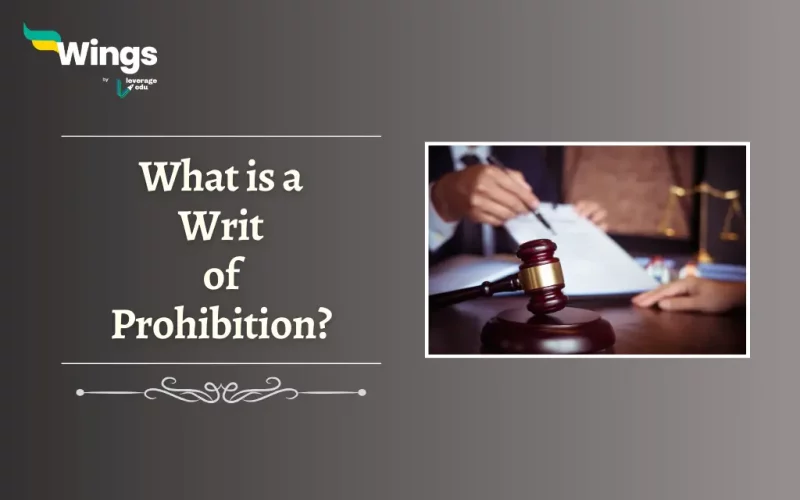A Writ of Prohibition is a very powerful legal means used in Judicial Review. In addition, it is fundamentally a Court Order given by a superior Court demanding a lower court, tribunal, or any other body using public authority to stop exceeding its jurisdiction or acting illegally. To put it simply, it is a red stop sign for Courts or tribunals that are about to exceed their limitations. This blog will also explain the Writ of Prohibition in more detail as well as its legal applicability in India!
Explain the Writ of Prohibition
Table of Contents [show]
Additionally, the two key functions of the Writ are as follows:
- Preventing Excess of Jurisdiction: The Writ guarantees that Courts and tribunals only handle cases within their legal authority as specified by law.
- If a lower court attempts to hear a case that should be before a higher court, or if a tribunal tries to decide on a matter outside its jurisdiction, a Writ of Prohibition can be invoked.
- Protecting Against Unlawful Actions: Moreover, it prevents Courts or tribunals from acting in a way that violates the law or established legal principles.
- Hence, situations where the Court overlooks proper procedures or fundamental principles of justice.
Also Read: The Basic Structure Doctrine: Safeguarding Constitutional Integrity
What is the Writ of Prohibition in Latin?
In the Writ of Prohibition in Latin the term “prohibition” itself originates from the Latin verb “prohibere,” which means “to forbid” or “to prevent.” Furthermore, this reflects the core purpose of the Writ which is to forbid a Court or tribunal from doing things outside their jurisdiction.
Also Read: Sources of Indian Constitution: Detailed Notes for Competitive Exams
Writ of Prohibition in the Indian Constitution
In addition, the Indian Constitution recognises the Writ under Article 226 and Article 32.
- Article 226: This Article authorises High Courts to issue Writs, which includes the Writ of Prohibition.
- It is for implementing Fundamental Rights and stopping the misuse of power by lower courts and tribunals within their jurisdiction.
- Article 32: Furthermore, this grants the Supreme Court of India the power to issue Writs, as well as the Writ of Prohibition throughout the territory of India.
Also Read: Preamble of the Indian Constitution
What is an Example of Prohibition in Court?
Brij Khandelwal challenged the Indian government’s agreement with Sri Lanka to transfer an island. He argued the Government lacked the power to give away territory. Even though he was unsuccessful, the case, Brij Khandelwal vs. Union of India, 1974 is a landmark case. Thus, it explored the use of the “Writ of Prohibition” to prevent actions exceeding the government’s authority.
Related Blogs
Lastly, we hope you liked our blog and gained an understanding of What is a Writ of Prohibition. Moreover, you may even read more blogs and empower yourself with knowledge regarding Civics and Polity!
 One app for all your study abroad needs
One app for all your study abroad needs















 45,000+ students trusted us with their dreams. Take the first step today!
45,000+ students trusted us with their dreams. Take the first step today!
